Power type Steam UIC class 1′D h2 Designer R.A. Riddles Total produced 935 | Leading dia. 3 ft 2 in (965 mm) Build date 1943–45 | |
 | ||
Gauge 4 ft 8 ⁄2 in (1,435 mm) Driver dia. 4 ft 8 ⁄2 in (1,435 mm) | ||
The War Department (WD) "Austerity" 2-8-0 is a type of heavy freight steam locomotive that was introduced in 1943 for war service. A total of 935 were built, making this one of the most-produced classes of British steam locomotive.
Contents
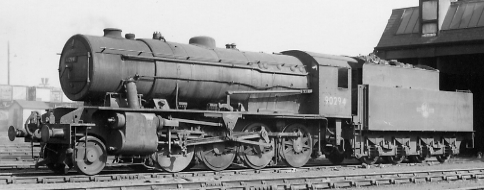
Overview
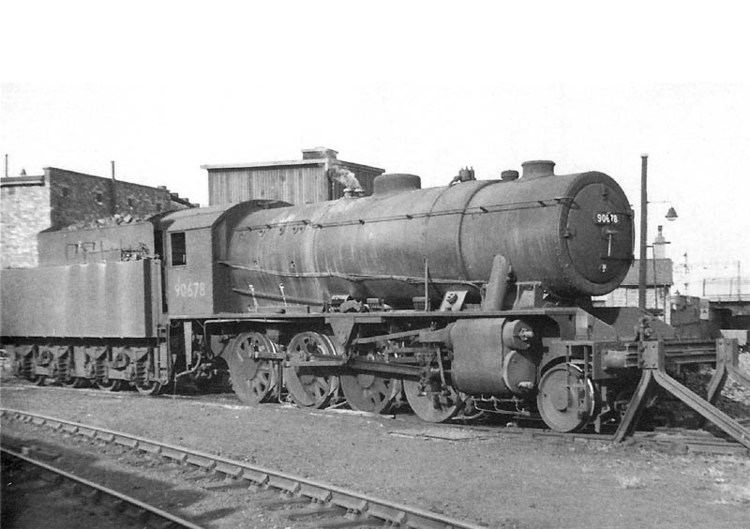
The Austerity 2-8-0 was based on the LMS Class 8F, which until that point had been the government's standard design. Various modifications were made to the 8F design by R.A. Riddles in order to prioritise low cost over design life. These included a boiler of simpler construction which was parallel rather than tapered and a round-topped firebox rather than a Belpaire firebox. The firebox was made of steel rather than the rarer and more expensive copper.
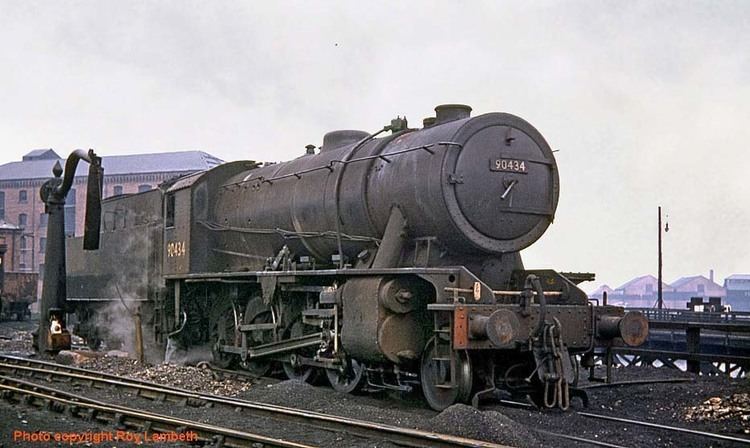
The North British Locomotive Company (NBL) of Glasgow built 545 (split between their two works at Hyde Park and Queen's Park) and the Vulcan Foundry (VF) of Newton-le-Willows, Lancashire, built 390. North British also built a larger 2-10-0 version.
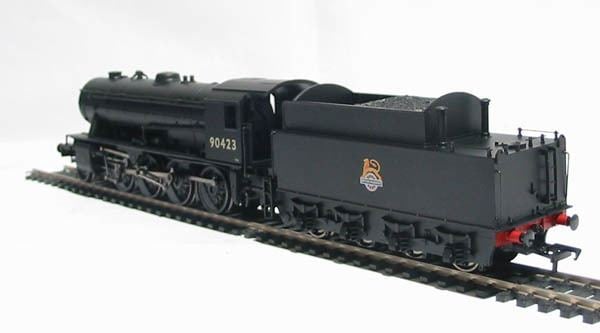
WD nos. 800–879 were ordered as LMS Class 8F. No. 9312, the last one built, was named Vulcan when new. NBL builder's plates were not all in correct sequence, and were mixed up between the two works as well as between batches. All locomotives had their WD numbers increased by 70000 prior to shipping to mainland Europe; those completed after 5 September 1944 carried their 70000 series numbers from new. All but three (WD nos. 77223, 77369 and 79250) saw service with the British Army in mainland Europe after D-Day.
Post-war disposal
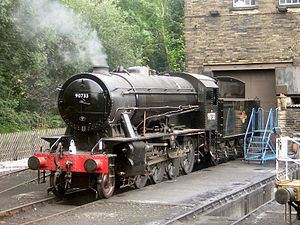
After the end of the conflict, the War Department disposed of 930 locomotives (Two engines being retained by the War Department and three being scrapped).
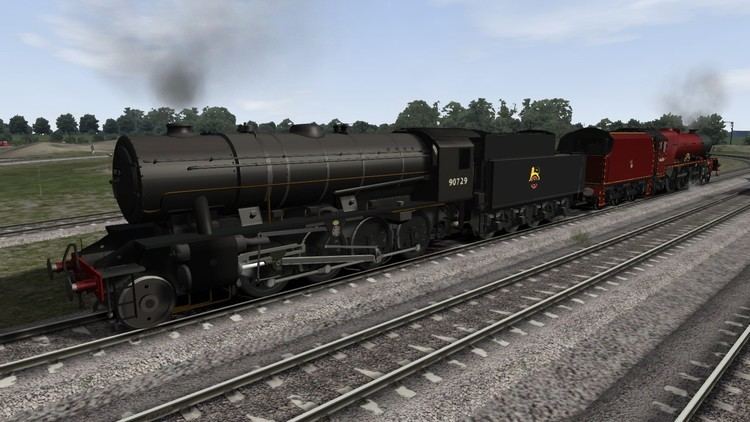
After the Second World War, 200 were sold to the LNER, who classified them as "Class O7" and numbered them 3000–3199. In 1948, 533 more were purchased by the British Transport Commission.
With the creation of British Railways, the 733 locomotives were renumbered into the 90000–90732 series. Only one of these, No. 90732, was named, becoming Vulcan after the Vulcan Foundry where many of the locomotives were built.
In 1946, 12 were exported to the British colony of Hong Kong to work the Kowloon-Canton Railway. Six were scrapped in 1956, but the final two survived until September 1962.
The other 184 locomotives remained in mainland Europe, mostly working in and around the Netherlands for Nederlandse Spoorwegen.
Finally, one went to the USATC in an exchange for an USATC S160 Class locomotive in the Postwar exchange of WD and USATC locomotives.
Postwar WD service
Two locomotives continued to be held in WD stock, seeing service on the Longmoor Military Railway in Hampshire, along with two of the WD Austerity 2-10-0s and other smaller locomotives. In the WD 1957 renumbering scheme, they were renumbered 400/1. Details were as follows:
Accidents and incidents
Preservation
One WD 2-8-0 has survived. Vulcan Foundry works No. 5200 was repatriated from Sweden to the Keighley and Worth Valley Railway. It was SJ number 1931. It was overhauled to its original condition, finished in 2007, which involved building a new cab and tender, become BR "No. 90733". After test runs, 90733 ran its first passenger train on Monday 23 July 2007.
